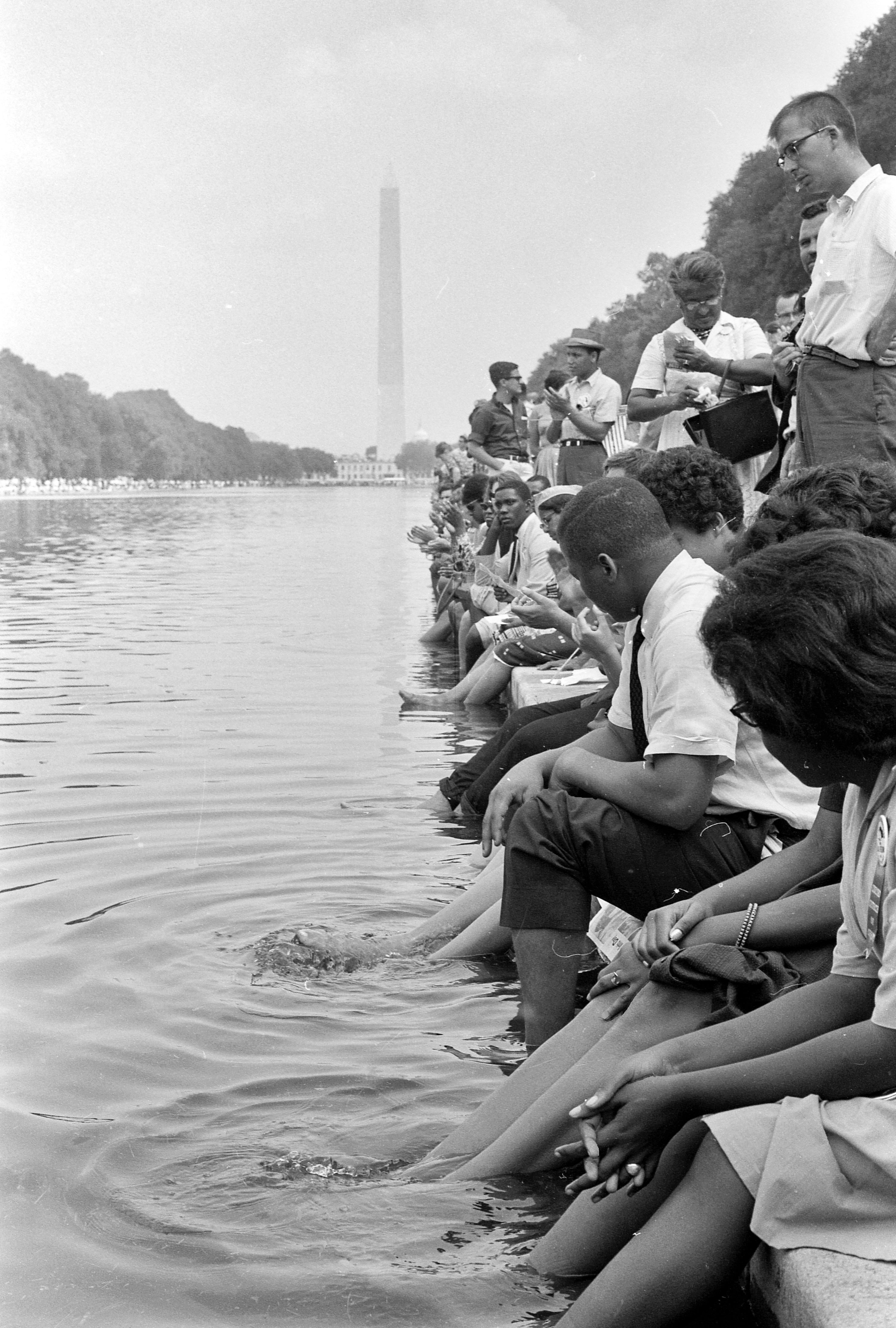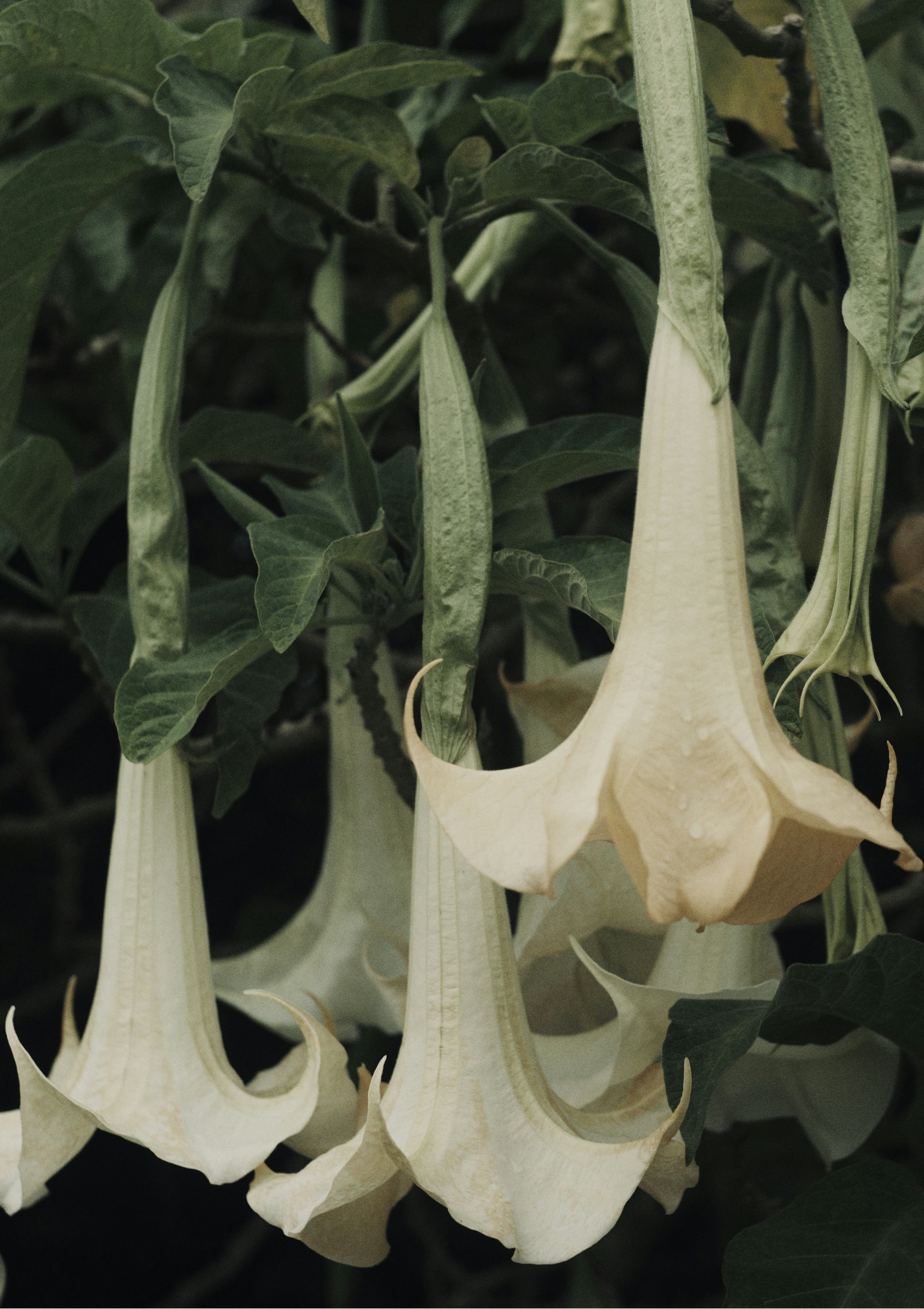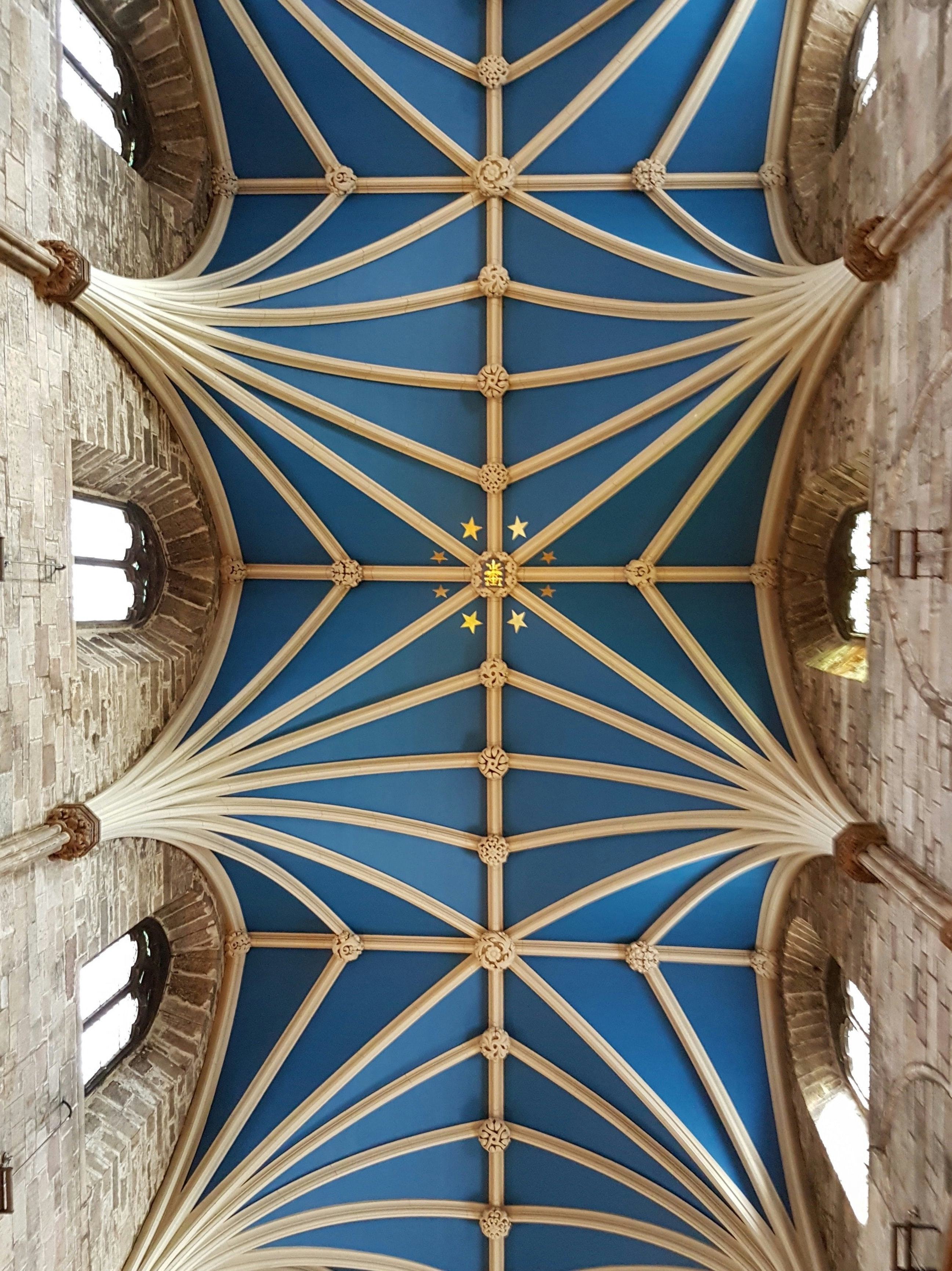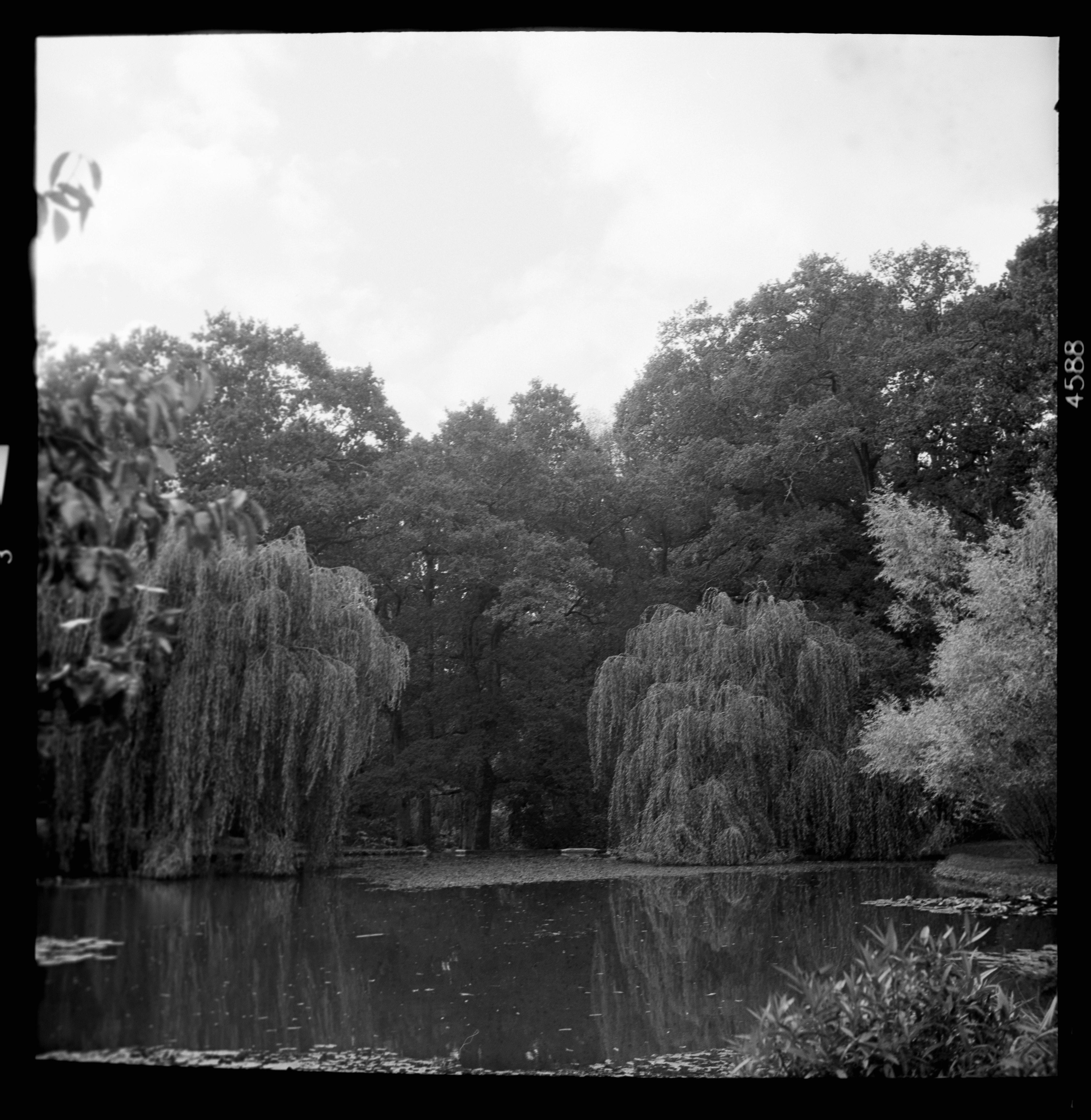I arrived at Nrityagram dance village in Karnataka, India in July of 2014 with the monsoon rain. Red clay earth stained my socks and sneakers as I followed the worn stone pathways. Coconut trees and banana palms slow-danced in the breeze, and the air was fragrant with jasmine and frangipani. Stone structures rose from the verdant landscape in gentle, curving lines, their henna-hued facades patterned with white line drawings. As I wandered the campus, I felt the presence of spirit life, of souls lost and found.
I was eight thousand miles away from my apartment in New York City, yet this month-long sojourn was a homecoming of sorts. In the early 1900s, my ancestors were brought from India to Guyana, South America by British colonizers to work as indentured laborers. In the 1970s, my parents left Guyana for North America to pursue higher education, eventually settling in the US. I’d found my way back to Indian culture through the growing South Asian community in central New Jersey where I grew up. I fell in love with Indian classical dance at eight years old, and continued to study and perform into adulthood. Recently married and fully employed, I put my responsibilities on hold to finally experience dance in the motherland.
Nrityagram was a modern version of a gurukul, a school where students lived on site with their gurus, or teachers. The village was founded in 1990 by model-turned-dancer, Protima Bedi, who transformed ten-acres of farmland into a destination for the study and practice of Odissi, an ancient style of Indian classical dance dating back to 200 BC. Nrityagram’s annual summer program offered the chance to learn from Surupa Sen and Bijayini Satipathy, world-renowned leaders of the Nrityagram ensemble, and long-time residents of the village. These dancers trained with masters like Guru Kelucharan Mohapatra, but they were also recognized for their own unique style and contemporary approach. I’d seen them perform in New York many times, mesmerized in the darkness of the Joyce Theater in Chelsea. At the village, these otherworldly incarnations of grace I idolized on stage materialized as sari-clad humans who laughed, joked, and welcomed us visitors to their sanctuary.
I was one of a handful of Americans that summer. With my brown skin and South Asian heritage, I might have passed as local, but my pixie-short hairstyle and Western accent gave me away. There was a pair of belly dancers from Brooklyn, and a Sri Lankan woman from Malaysia, but most of the students came from different parts of India. What united them all was their hair - luscious, knee-length tresses they wound casually into buns or braids.
The uniform at Nrityagram was a starchy cotton sari; I purchased two in shades of emerald and crimson from the campus shop called the “Nitty Gritty.” Up until that summer, I had only worn saris on special occasions like weddings with the help of my mother and aunts. In dance classes in America, we wore salwar kameez, loose pants and a long top with a draped dupatta, or scarf. At camp, we were expected not only to tie our own saris, but dance in them for several hours each day - not to mention wash them by hand outside on a slab of stone. Every day, I spent an hour before classes sweaty and frustrated as I tried, again and again, to fold and tuck the fabric into submission. I kept waiting for some dormant instinct to kick in, buried in my brown-girl genes, but it never did. On the days when I looked particularly disheveled, one of my suite-mates, Shruti, a residential student from Perth, Australia who was on her third trip to Nrityagram, took pity on me and redid my pleats.
Our days began at 6:30am, when we were encouraged, but not required, to take a run or walk around the campus with the residential students, for whom the outing was compulsory. The residential students were in training to be a part of the ensemble, which took over seven years of commitment, if not more. In addition to their rigorous practice schedule, they were student teachers in our classes, taught children from nearby villages on weekends, and were responsible for the day-to-day running of the village and school.
By contrast, the summer students enjoyed a curated taste of the Nrityagram way of life. We were assigned simple chores to contribute to the gurukul; mine was sweeping one of the verandas with a long grass broom. In the evenings, the residential students served us stainless steel plates of mildly spiced vegetarian curries, chapatis and rice. With its thatched roof and low red clay walls, the dining hall was open to the surrounding landscape. Unlike a Western cafeteria, there were no tables and chairs. We ate cross legged on the floor with our plates in our laps. This experience was strange for the other Americans, but I was familiar with this style of eating from the Guyanese Hindu temple functions I grew up with. In those communal meals, I felt especially grateful for the privilege of not having to think about food for a month - not having to haul bags of groceries on the subway, or spend hours cooking and cleaning. After the meal, we used flashlights to navigate through the darkness to our living quarters, looking out for snakes and scorpions. Without streetlights or residual city glare, nighttime at Nrityagram meant true, unmediated darkness.
Almost all of the summer students lived in the kula, dorm-like suites bordering a central quad area where everyone hung out. I, however, was assigned to live in the antikula, a separate building a few hundred yards away, along with Shruti and Patricia, an American from Kansas. On one of our first nights, the three of us were certain a wild animal from the surrounding woods was scratching at our door, until we realized it was a giant rat gnawing on a paper cup under a bookshelf. The hardy village rats were stubborn residents of the antikula. One night around 2am, I woke to Patricia screaming when a rat bit her toe. I was so disturbed, I called my older sister in Denver, Colorado, where fortunately, it was the middle of the afternoon. Shortly after, Patricia moved off campus for a few days to recover, leaving me with our vicious companions.
I’d never been camping, but living at Nrityagram meant being in constant conversation with nature, whether I wanted to be or not. Like the dining hall, the dance studios were thatched structures open to the surroundings, and as I soon learned, bugs and bats. I tried to take the experience in stride, from the credit card-sized cockroaches that meant rain was coming, to the birds that squawked like car alarms, to the massive crows that congregated like gossiping old women.
Alongside the discomfort, there were also moments of wonder. After a good soak, the colors of the landscape were especially saturated, like a filter on a photo. The red earth became rich and luminous, and the green leaves were almost electric. Snails and worms slithered on the wet stone, and the air was clean and cool. I relished those technicolor views, so different from the muted gray of the city I called home.
Each day, I struggled with nature, but even more with my ego. Eager to learn and hopeful to impress, there was an implicit sense of competition among the summer students. Many of the women from India were studying dance at the university level, already on a professional path. In America, Indian classical dance was an extracurricular separate from every other aspect of my suburban life, a subculture within a subculture. The standards at Nrityagram were high, and I worked hard to keep pace. Unlike the studios in New York, there were no mirrors in the rustic, hand-hewn spaces. We had to rely on memory, instinct, and the feedback from our gurus and fellow dancers. By the end of the first week, I was deemed good enough to be placed in a smaller, select group, to the chagrin of some of the others, including my roommate, Patricia.
Our classes, which were taught in English, included yoga with a French expat they called Marc Sir, and a tortuous session called “body conditioning,” which was a mix of martial arts and strength training. My favorite class was Odissi Basics, where we practiced the fundamental movements and rhythmic steps of Odissi. This class was taught by Bijayini herself. Even off-stage, in plain clothes, her presence was larger than life. With a heart-shaped face and wide smile, she exuded calm and elegance, like a benevolent deity, even as she drilled us. I felt a little thrill when she touched my elbows to indicate I should lift them higher.
The summer students agreed that of the two, Surupa was the scary one, sharp and quick-tempered. The first student to graduate from the grueling program, she’d been at Nrityagram for almost thirty years and had earned the title of Artistic Director. During our breaks, I watched her teach the residential students; her corrections were relentless, her tone harsh, even sarcastic. In our first Theory and Practice class, she demanded I remove my wristwatch, the last vestige of my New York life. “Dancers should never wear a watch,” she admonished, a lesson to the whole group. In her presence, I felt as small as the mosquitos that feasted on my arms and legs.
When Bijyani and Surupa performed for us in the Odissi gurukul, my heart pulled in two directions - painful awareness of my own limitations and wholehearted appreciation for them as artists. They didn’t need costumes or stage lights to enhance them; a lifetime of training lived in their bodies and poured out when they moved, filling the audience with profound joy. For them, dance was more than a profession; it was a complete immersion of mind, body and soul, to the sacrifice of all else. Romantic partners were secondary, and children were clearly out of the question. Did they ever look over the tops of the banyan trees and imagine a future beyond the village walls? They moved so seamlessly together, I wondered if they’d ever been lovers. In their bodies, a simple motion became an exercise in transcendence, striking the ideal balance between control and release. My own body felt unreliable, my limbs sore and shaky.
In the beginning and at the end of every session, we students lined up to complete the namaskar, folding all the way to the floor, one by one, and flattening ourselves in complete submission below the guru. We touched her feet and received her blessing. The ritual felt a little awkward, especially coming from the Western world. But it made sense in this context. I knelt willingly, my forehead touching the dusty earth.
On weekends, some of the students went home or took a rickshaw to town for packets of ramen noodles, bags of coffee, and bottles of Odomos, the only bug repellant that worked. On the days when the village emptied out, I looked at my wedding photos on my laptop, the vivid images bursting from the screen. The event was only a few months past, but sitting on a twin bed in India, it felt like it had happened in another dimension. I marveled at the bride version of me, glamorous in heavy make-up and a glittering lehenga, smiling beside my husband in his gray suit and printed tie. With oceans between us, I thought about our future and the family we were planning to start. Alone in the antekula, I felt a mix of fear, excitement and uncertainty around the next phase of my life.
In quiet hours, I walked to the amphitheater, an expansive outdoor stage where Nrityagram held an all-night dance festival every spring. I could only imagine what the space felt like filled with thousands of people. On the wide, asymmetric steps, I sat and scribbled in a gray suede journal bound with blue thread my coworkers gifted to me before the trip. I wanted to record everything I was thinking and feeling: in-depth analysis of my insecurities, breakdowns of the social dynamics of the group, and detailed accounts of the vermin that plagued me.
Reading that journal now, I hide from my two young children at my desk. Their voices echo up the stairs, reminding me that I will soon be needed. In the fine scrawl of my handwriting, I recall the fullness of time on those quiet weekends, the amorphous shape of days that were mine to fill.
*
The summer session at Nrityagram ended with a presentation of what we had learned, from Odissi basics to excerpts of dances they choreographed for each group. Along with the village staff, some of the dancers invited local family and friends, giving our humble performance a small audience.
All the nerves I experienced over the course of the month took over my body on the day of the performance. The first time I screwed up, I was well into my movements when I caught sight of another dancer and realized I was doing the wrong part. To my horror, this happened again and again. I had performed hundreds of times in my life, and had never struggled with my memory. But there I was, blanking out repeatedly, in front of the two people I wanted to impress most. Later in the show, I felt redeemed in the pallavi, the rhythmic piece I loved. But by then, it was too late.
Afterward, I found Bijayini, Surupa and some of the other women chatting and laughing, sitting in a circle under the shade of some leafy trees. With a stab in my chest, I realized they were laughing at me, recounting my many errors with what seemed to me like cruel delight. I was, quite literally, the village idiot for the day.
If I had been a little more secure, I could have laughed at myself. But I was too fully in my feelings that day, my heart raw and bruised from a month of self-doubt. Their laughter seemed like confirmation of all my worst fears: that I would never belong, that I was not worthy of their time. I was horrified that after working so hard all summer, this would be the way they remembered me.
I left the circle, found a quiet corner and cried my eyes red. After about ten minutes, I tried to calm down. I reminded myself that in a few days, this whole experience would be behind me. I would never see any of these people again. I thought of my life in New York, and the people who really knew and loved me. I thought of the hundreds, maybe even thousands, of people I had entertained on-stage from my first performance to this latest disaster. I tried to remind myself that this day didn’t have to define me. It was just a blip. A big, fat, ugly blip.
That night, at the farewell party, I was surprised when Surupa approached me and began a conversation. I figured she felt bad for laughing at my expense, and was just taking pity on me. But she was kind, telling me that I had done very well. She shared a bit of her own story, telling me how she was a Bharatanatyam dancer before she discovered Odissi. She claimed her sister was actually the better dancer, which I found hard to believe. But she had gotten married and had children, ending her prospect for a career in dance.
Surupa assessed me with big kohl-rimmed eyes. She said she saw a fire in me that I did not show. This statement, spoken like a prophecy, both flattered and disarmed me completely.
That night, I opened up, telling her about my life in New York, and my ambivalence about having children. She said that she could tell I was the kind of person who tried to do whatever I did well. She said she knew I would be a good mom, but it would become my whole life.
“Take a year off,” she encouraged. “Do what makes your life happy and meaningful.”
I couldn’t sleep that night as I lay in my bunk, Surupa’s words echoing in my mind. A fire? In me? What did that even mean?
My thoughts swung like a pendulum between a desire to escape and a desire to stay. Part of me was thrilled to be getting on a plane to return to my husband, family and friends. I longed to once again shower in hot water, wear an outfit that didn’t require an advanced degree in origami, and eat pasta or tacos or whatever food I craved.
But a part of me felt panic at the prospect of leaving this place, so different than anywhere I’d ever known. I wondered if I could stay as a volunteer. I would happily serve the dancers in the canteen their stainless steel plates of idli and sambar. I would gladly sweep all the verandas in the campus for the chance to stay tethered to this world.
Mentally, I began reconfiguring my life to create a space for Nrityagram in my future. What if they let me return to study dance? Could I be like my suite-mate Shruti, flying back and forth between continents, chasing two lives at once? Could my bruised ego handle ever-more beating? Was there a chance this experience was not an ending, but a beginning?
*
By August, I was back home in New York City, settled into my daily routine. The next summer, on July 7th, 2015, I gave birth to my first child. I have not returned to India since my time at Nrityagram.
In my mind, the summer I spent there is enshrined like a lush, verdant snowglobe, glittering with monsoon rain. Inside the globe, the air is fragrant with jasmine and frangipani, lilting with the notes of a pallavi. A crimson-colored sari hangs on a clothesline, waving like a sail in the breeze. And on the steps of a red clay amphitheater sits a woman, forever writing in a gray suede journal bound with blue thread.
Sumitra Mattai is a freelance writer and textile designer. She holds a BFA in textile design from the Rhode Island School of Design and an MFA in Creative Writing from The New School. Sumitra enjoys writing essays about identity, food, design and family. She lives in Harlem, New York City. Follow Sumitra on Instagram, @sumitramattai, and visit her website.
Discover more from Sumitra Mattai.









